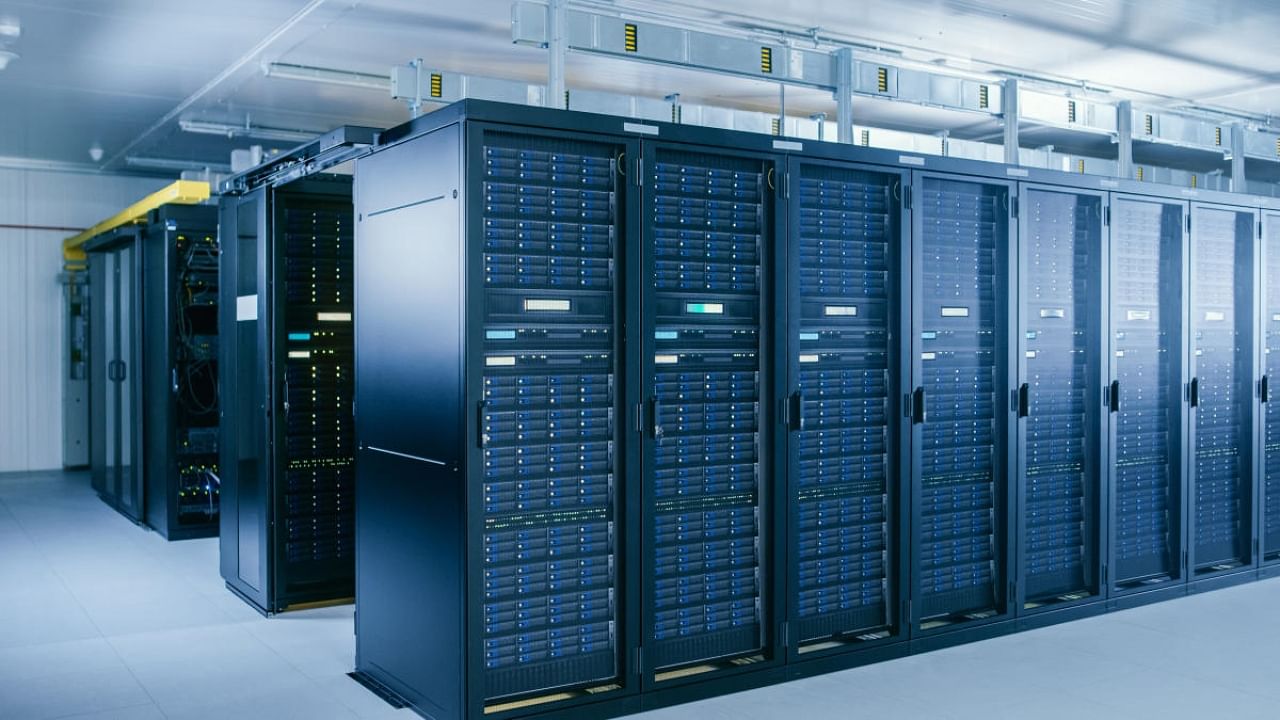
India’s digital explosion is turning out to be a boon for its realty sector.
With millions and millions of Indians going online to work from anywhere, transfer money, shop for goods, watch movies, play games and reconnect with friends, and the government making a huge push for e-governance, the country is seeing an unprecedented demand for data centres, or facilities that house the infrastructure for storing and managing the data tied to these applications and services.
That is good news for India’s commercial real estate firms that are armed with or plan to invest in huge land parcels that have good fibre connectivity, reliable power supply and a high level of disaster proofing.
The Covid-19 pandemic marked a "leapfrog jump" in people's data consumption, said Rao Srinivasa, who is a managing director for project management and data centers at property consultancy Colliers (India).
To make things better, the government recently decided to provide infrastructure status to data centres, a move that is likely to help developers get better access to institutional credit at lower rates and win foreign investments.
“The country needs to develop 15 times more data centre capacity to address Digital India’s ever-increasing data storage needs,” said Sunil Gupta, who is the co-founder and chief executive of Yotta Data Services, the data centre and cloud services arm of conglomerate Hiranandani Group.
Last week, ratings agency ICRA predicted a six-fold increase in India’s data centre capacities in the next six years. It sees 4,900-5,000 MW of capacity involving investments of about Rs. 1.50 lakh crore being added in the period.
In addition to Hiranandani, other Indian conglomerates such as Adani and Reliance, foreign investors such as Blackstone, CapitaLand and Princeton Digital Group and tech giants such as Amazon and Microsoft have all started investing massively in Indian DCs, ICRA pointed out, adding that existing players were also expanding their capacities.
Two kinds of DCs will see demand in India, according to Devi Shankar, president - Industrial Logistics and Data Centres, Anarock.
The first kind will be owned and operated by the company it supports and the second, better known as colocation data centres, will consist of one owner leasing space or equipment to multiple smaller enterprises in a single facility on a periodic service basis.
“We know that Bangladesh, Sri Lanka and Nepal, for example, have geographic and climate change challenges. So, India could actually end up being at least a sub-regional (data centre) hub for South Asia,” said Vivek Dahiya, who heads the data centre advisory team at Cushman and Wakefield Asia-Pacific arm.
India’s data centre stock is seen doubling by 2025 to 20 mn sq ft, from the current 10.3 mn sq ft, Colliers said in a December 2022 report.
Differences aplenty
Meant for storage of massive computing hardware, data centres consist of huge buildings, much larger than typical office buildings and structurally very different from them, according to Diwakar Chintala, founder of Bengaluru-based architecture firm Studio Chintala.
Unlike traditional office buildings, data centres are capital-intensive facilities that need uninterrupted power supply, dedicated cooling and backup power generators and a fixed proximity to the tenant.
“Data centres are made for hosting equipment and not people,” Gupta remarked, adding that they follow multiple design, engineering, construction and operational practices which are different and more advanced compared to regular commercial buildings.
In addition to proximity to submarine cable landing stations and reliable energy sources, physical security, disaster recovery, availability of skilled manpower and ongoing support and maintenance are key parameters for setting up a data centre, he elaborated.
Unlike an office building, in a data centre facility, the real estate components such as land and the building comprise about 25-30 per cent of the total capital expenditure, the MEP (mechanical, electrical and plumbing) constitutes the remaining 70-75 per cent, said Anarock’s Shankar.
The per square footage cost, which is about Rs 4,000 - 5,000 in a traditional office building, shoots up to Rs 20,000 - 25,000, including MEP, for a data centre, she explained.
Hurdles
Industry stakeholders pointed out an inconclusive central policy - Draft Data Centre Policy 2020 and Digital Personal Data Protection Bill 2022 are yet to receive a parliamentary nod to become formal vehicles - as a stumbling block in the expedited growth of the Indian data centre industry.
“A statutory level of clarity would be very helpful for people to continue investing in India,” said Dahiya.
Several state governments such as those of Uttar Pradesh, West Bengal, Telangana, Odisha and Tamil Nadu have released their respective policies that incentivise data centre development via cost and power subsidies, exemptions on stamp duty, discounts on usage of renewable energy and procurement of IT components made locally.
However, last mile connectivity from power substations to data centres continue to pose challenges.
“Many of our sites fall because the nearest substation is full and we have to draw power from a substation 7-10 km away and the power cost of drawing that is really high, so it becomes unviable,” attested Dahiya.